The northern Basin is home to a complex network of people, places, industries, and organisations with varied needs. As part of our most recent tour, the delegation met with members from the Namoi and Gwydir catchments. The group had conversations about how the river system supports irrigated agriculture, cultural needs, urban water supply, and other key industries in the region.
The tour began in Moree – the major service centre of the Gwydir catchment
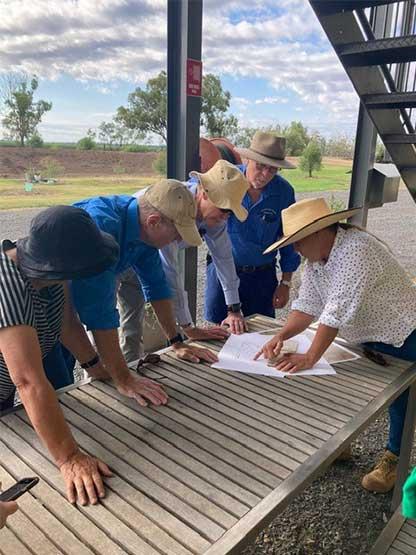
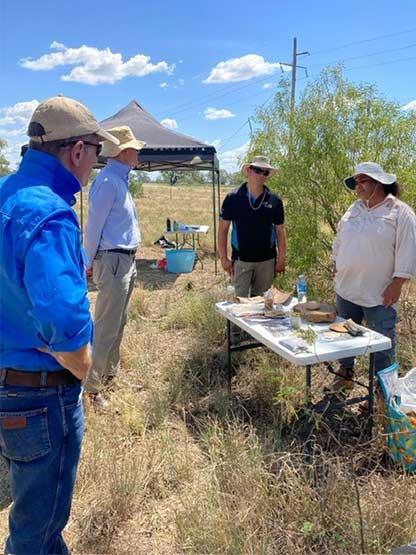
Arriving bright and early in Gomeroi country, the delegation were joined by representatives from the New South Wales (NSW) Department of Climate Change, Energy, the Environment and Water (DCCEEW), Gwydir Valley Irrigators Association (GVIA), and local community members to discuss the Gwydir Reconnecting Watercourse Country Program. They heard from attendees on the impacts of the Gwydir Raft on the Gingham Watercourse, and the Gwydir Wetlands Adaptive Environmental Management Plan.
After a working lunch with the Moree Plains Council, the group embarked on a short journey to Whittaker’s Lagoon, where they were welcomed by Gomeroi Elder Liz Taylor and joined by members of the Gwydir Aboriginal Water Advisory Group, and OzFish.
Whittaker’s Lagoon is a culturally significant site for the Gomeroi people and is now being used as an outdoor classroom, where local students can learn about the environment and traditional ways of caring for Country.
The delegation also caught up with the rest of the GVIA Board members and National Irrigators' Council CEO Zara Lowien. Their conversations centred on the 2026 Basin Plan Review, and the 4 Ramsar listed sites which form the Gwydir Wetlands. These wetlands are among the most extensive and significant semi-permanent wetlands in north-west New South Wales.
Crossing catchments into the Namoi Valley
Day 2 of the tour began with a drive to the west for a working lunch with members of the Local Aboriginal Land Council (LALC) in Australia’s Cotton Capital, Wee Waa.
While in this rich agricultural area of the catchment, a visit was made to the Wee Waa Arts and Cultural Centre, which was recently developed with funding from the Murray–Darling Basin Economic Development Program (MDBEDP).
The second day of the tour wrapped up with a visit to the Australian Cotton Research Institute, and a farm tour with a number of local irrigators. During these visits the delegation had the opportunity to talk to members from the NSW Department of Primary Industries, Commonwealth Scientific and Industrial Research Organisation (CSIRO), Australian Food and Fibre, and Namoi Water.
To Gunnedah – the home of cotton, coal, and koalas

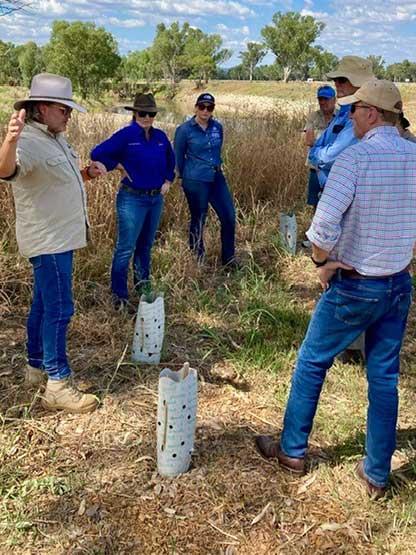
Whitehaven Coal was the gathering point for the third day of the tour, including a visit to the Maules Creek Mine – the newest and largest coal mine in the region. Together the group discussed water management and the environmental approach to Whitehaven Coal’s operational sites and development projects.
While heading further south to Gunnedah, the delegation dropped into Boggabri Farm, where they were joined by landholders and representatives from several local businesses and organisations. This visit gave the group an opportunity to learn about the farm’s upgraded irrigation water use and management, which was funded by the Australian Government Department of Climate Change, Energy, the Environment and Water’s On-Farm Irrigation Efficiency Program.
Before calling it a day, the tour headed out along the Namoi River to witness the significant remediation and revegetation activities that were carried out as part of the Kamilaroi Guda Koalas project. The 2-year program is now complete and has increased and enhanced crucial habitat to support Gunnedah's declining koala population.
Calling it a day in the catchment’s centre
To wrap up the tour, the group headed east to catch up with WaterNSW for an exclusive tour of Keepit Dam. Lake Keepit is a major irrigation storage that provides the designated water supply for Walgett (over 300 km downstream) and allows for flood mitigation in the Namoi Valley.
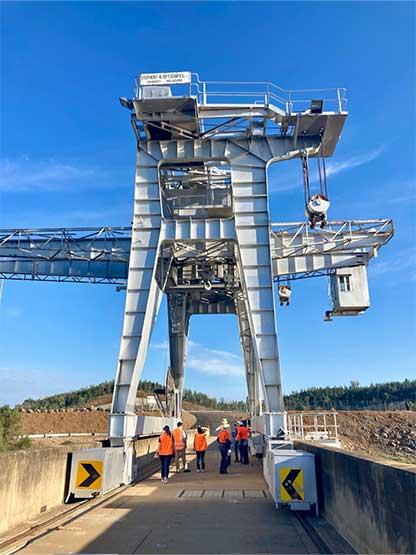
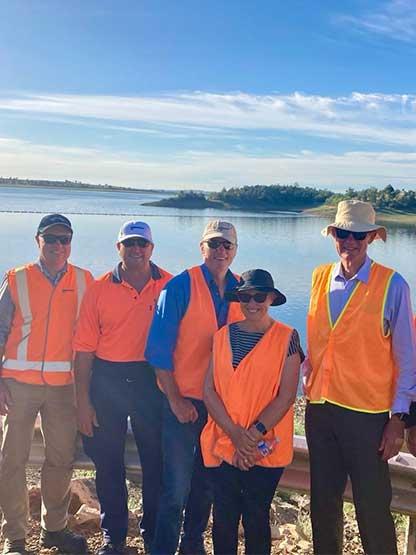
After 4 days of forming community connections, before departing Tamworth the group made one final stop at the University of New England campus to learn about the Upper Namoi Valley Water in the Landscape Initiative (WILI). The goal of this initiative is to help landholders and water managers better understand how to manage water in their landscapes, and to enhance the economic, social, cultural, and environmental sustainability of the Upper Namoi Valley.
Sir Angus noted what an incredible experience it was to discuss the ongoing challenges and successes of water management with northern Basin communities. He commemorated the aspirations of river communities, and looks forward to working together to ensure a healthy Basin for generations to come.